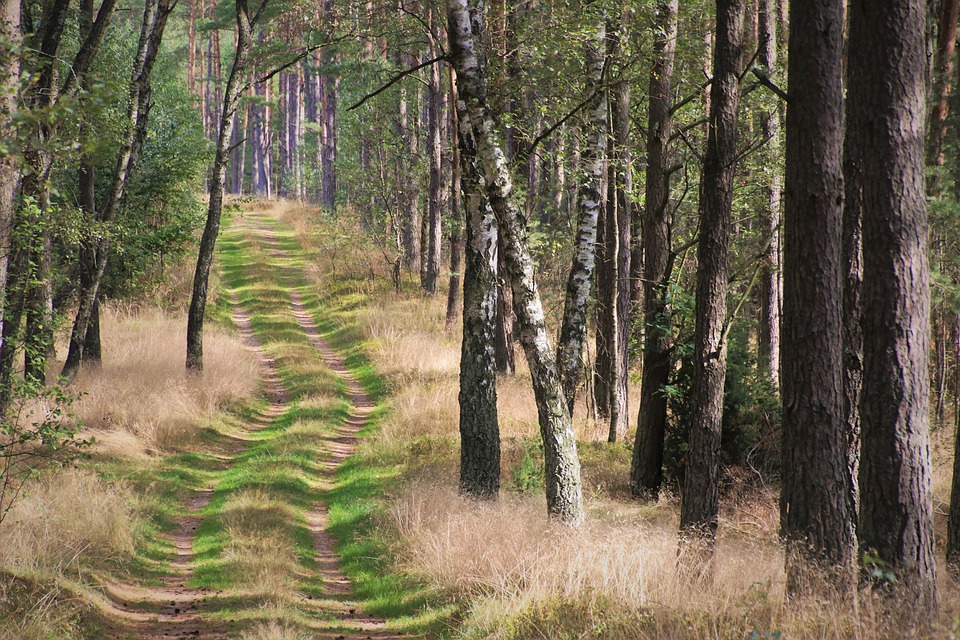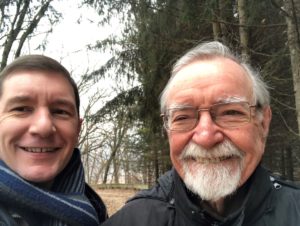
Departing the Institutional Forest (Part 2)
“And both that morning equally lay
In leaves no step had trodden black.
Oh, I kept the first for another day!
Yet knowing how way leads on to way,
I doubted if I should ever come back.I shall be telling this with a sigh
Somewhere ages and ages hence:
Two roads diverged in a wood, and I—
I took the one less traveled by,
And that has made all the difference.”– Robert Frost (The Road Not Taken)
In last week’s post, I shared the first three of seven pathways out of institutionalization and towards interdependence in natural and diverse communities. Here are the next four:
4) Host and connect
Every community has an abundance of gifts, associations and hospitality. Acts of hosting and intentionally connecting our neighbours’ gifts, skills, knowledge and passions, while good for us all in the moments they occur, also have long-term positive impacts that enable us to discover the power, possibility and pleasure that surrounds us in our local places and close relationships. Even during COVID-19, we need to figure out ways of hosting each other safely on land as well as online. This will become more and more important as the levels of oxytocin, the cuddle hormone, continue to diminish around the world in the face of the coronavirus. My friend Tom Dewar, told me a wonderful story last week, about folks in a neighbourhood in the US who are imagining ways of staying together through the cold winter while observing the important public health guidelines around physical distancing. Now that their traditional indoor gathering venues are shut, they are trying to adapt to the pandemic, by staying together, while remaining safely apart. The community in question has a strong presence of 2nd and 3rd generation Finns. So, they are talking about what they euphemistically term “Finnish Townhalls”, which in practice are powerful outdoor heaters that people can gather “at a safe distance” around in local their neighbourhoods. I’m not advocating this solution, over any other, but I love the fact that they are trying to figure out ways of staying safely connected on land and well as online. We need more of this sort of street-level innovation. Please don’t misunderstand me, I know there will be weeks and months when staying within small pods, and sheltering at home will be the better part of valour, and I recognize the great value and neighbourliness of participating in those efforts too. It’s not either-or, but we need to expand our repertoire of ways of being together beyond the forest institutional compliance or resistance.
5) Celebrate
Throughout human history, dancing, music, feasting, and laughter have been at the forefront of how we have encouraged each other through good times and bad, to stay the course and cultivate a shared way of prevailing as communities. You know you are leaving the institutional grind when you hear the party beats cranking up. At times of birth, in remembrance of those who have died, in the face of natural disasters and in the bringing in of the harvest, we have joined together in association, to celebrate. Celebration holds a mirror up that allows us to look back, and to hope forward, that helps us learn and adapt; that enables us to let go of the things that have reached their natural end, and to welcome in the new; even the unwelcome. There are few other practices more powerful than celebration for making the invisible possibilities -beyond the forest- visible; down through history the bards sang about the gifts and passions of individuals and kinship groups; coats of arms were created to praise the virtues of kin and clan, and to this day, parties are thrown in honour of passed and more recent community triumphs, while stories keep alive for generations the culture of the people of “this place”. So, if you wish to make visible the gifts, associational capacity and hospitality of your community, host a party to celebrate all that which residents have done and are doing to make their community better.
But! And this is a big BUT! We must now learn how to celebrate in a pandemic conscious way. Our challenge is not to stop celebrating but to learn how to do so differently; safely. In a plague, there is nothing neighbourly about sharing our spittle in songs of praise or hugging each other to death over beers and BBQs. Celebrate we must, together, safely apart. But how? We can learn from neighbourhoods that played neighbourhood bingo from their doorsteps in March; exercised from their driveways in May; serenaded each other from their balconies in June, but in the end, we will have to figure out what works best in our contexts. And that is really tough, because the heroism we say in the first wave of restrictions, is somehow harder to muster up in the second, third and fourth. Still, we must stoke the embers and light the winter days to come with stories of what we did before, and though cold and tired, what we will do again. Because that is how we prevail. That level of antifragility is not to be found in a forest of services, but in a community of neighbours with service in reserve backing us up.
6) Know the Necessities
Every one of our neighbours, is just like us, in that they need to be needed. One of the great lessons of the COVID-19 pandemic is, again borrowing from the wisdom of Tom Dewar, that we would be wise to get to know our neighbours before we really need them. The coronavirus highlighted just how much we need our neighbours during a public health crisis. But neighbours are not just for pandemics, they are for life; they are a human necessity. It is often said, that necessity is the mother of all invention, if that is so, I would add that proximity is the father. When we awaken to the fact that our local neighbourhoods are the ideal thresholds within which we can hope to organize ourselves for equitable economies, more sustainable ecologies; more compassionate care, and all over wellbeing, we will then conclude that a neighbourhood has what we need if we use what we have fruitfully and compassionately. Our neighbourhoods are the launch pads from which we can flourish forward fairly.
7) Search/pursuit of our way
Communities are not built on corporate strategies nor are they developed simply through random acts of kindness. The communities that discover their power, possibility and pleasure close to home, and by their own hands, do so by intentionally searching out what they care about locally and what surrounds them so that they can grow a culture of kindness and productivity. The search is not for short term gains but for the ties that bind and a way that lights the road ahead.
While gift exchange; going at the appropriate pace of a community and practising hospitality, are all essential features of deepening community life, for a community to become powerful it must eventually develop some basic structures that enable local citizens to organize themselves at the neighbourhood-scale, mindful of the world as it is, with the challenges that must be faced up to if we and our planet are to prevail. Perhaps then we can return again to a forest, not one that has been planted row by row, but one that has been rewilded, with an environment where indigenous wisdom flourishes and the gifts of all are given and received. A forest that has no need to colonise the land around it, but that flourishes and co-exists with diverse ecologies.
Closing thought
There are many definitions of community, so many in fact that it is futile to try to be definitive. What I will say is this, whether before, during or after COVID-19, a defining feature of community for me is that it is an experience that people who believe the satisfaction and wellbeing of their neighbours is essential to their own, create. While we await a vaccine and better therapeutics there is work to be done, neighbourly work, and in the act of doing it, we will flourish forward fairly. Onwards!

